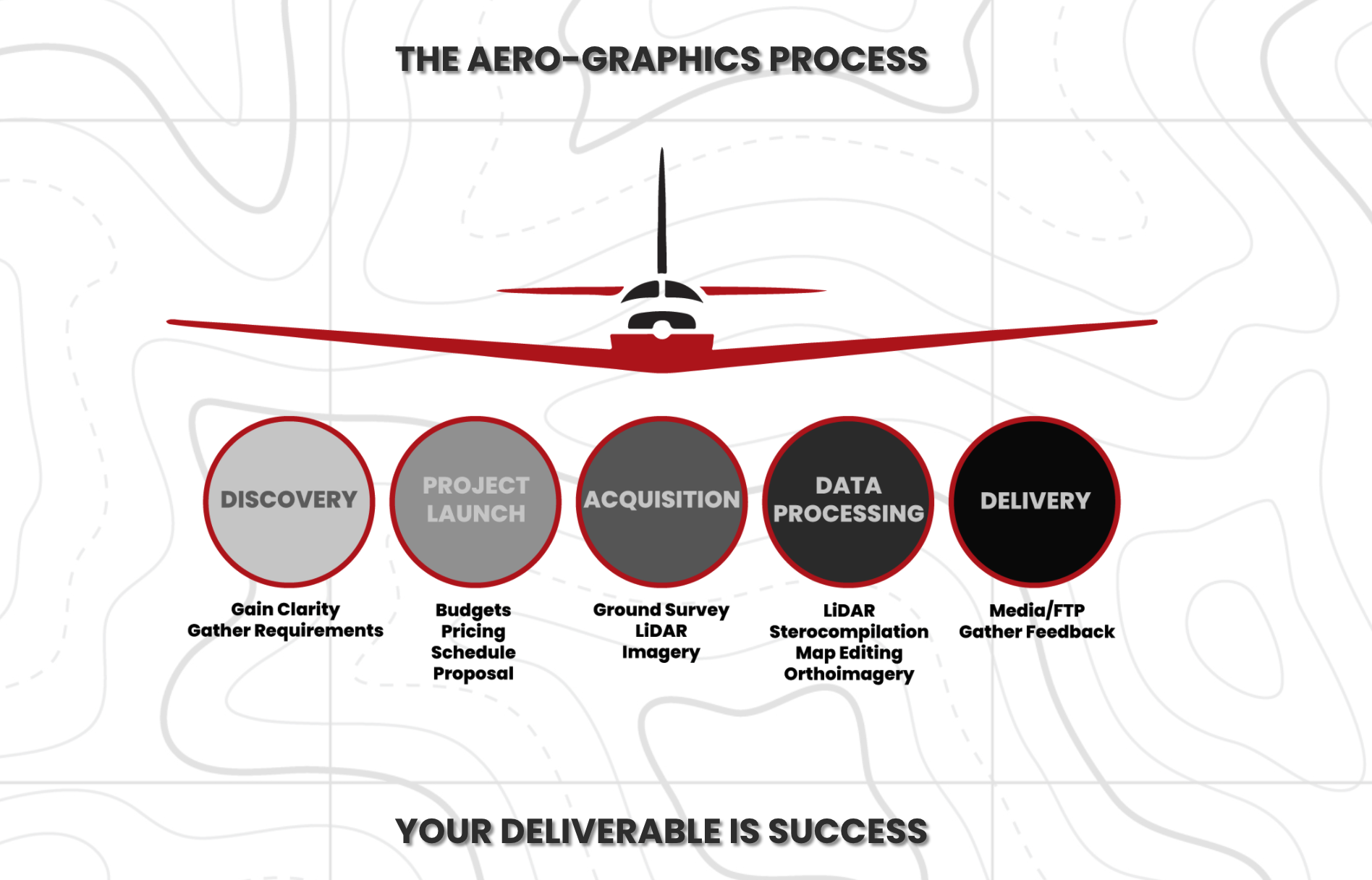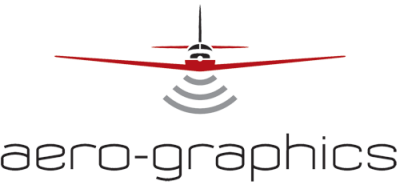At Geo Week, we often focus on the specific technologies, sensors and data processing workflows that can improve processes or solve problems. But what is less often discussed is the human factor - the people who are driving these innovations and finding new applications for existing technologies. For Aero-Graphics, their long family history in the geospatial services and aerial imagery business is one of their greatest strengths, and their long view of the industry is particularly noteworthy in an era where everything feels like a startup.
Recently, Geo Week news caught up with Kelly and Casey Francis, brothers and co-presidents of Aero-Graphics, to talk about the evolving geospatial services industry and how their philosophy sets them apart.
When mapping is ‘in your blood’
Aero-Graphics was originally founded in 1965, when original founder Clyde Condley saw a business opportunity for providing mapping services. Shortly after the company’s founding, Kelly and Casey’s father Stan Francis, was hired as a drafstman, and eventually worked his way up to become the General Manager. When Clyde decided to move on from the business, he offered the company to Stan - who would run the company for the next thirty years. When it was time for him to step down, the company was turned over to Casey and Kelly, who have now been at the helm for over twenty years.
“It’s been in our blood ever since we can remember,” Kelly says, laughing. The Francis family legacy in the industry is surprisingly long, especially considering the ever-evolving nature of the geospatial industry.
“When we were growing up, we knew nothing more than the mapping science and aerial photography - it was something that was discussed every night at the dinner table,” added Casey.
It would be a mistake, however, to confuse such continuity and longevity for stasis. The company has transformed since its forming. At its outset, Aero-Graphics was primarily a drafting enterprise - collecting aerial photography and drawing assets such as pipelines and mileposts on mylar deliverables. As the technology for photogrammetry and lidar and GIS came on the scene, the company evolved to take on new technologies, new industries and new challenges.
Casey and Kelly both recalled helping set up targets in the field for photogrammetry missions, which then evolved into plotting GPS locations and then eventually learning how to employ total stations.
“What captivated me and hooked me long term was the amount of change - the dynamic nature of what we’re involved in, and how many people that what we do impacts. It’s really endless.” said Casey.
A loyalty to trust, not sensor brand
It would be easy for a mapping services provider like Aero-Graphics to stick to comfortable processes or just doing the mapping for a client and moving on. But when Casey defines what his company does, he has an entirely different answer.
“The problem we are really trying to solve is - how can we accelerate and create more accurate decision making?”
While that might sound broad, it guides their decisions and how they work with clients. When working with their customers, they want to know first how the data collected is going to be used, in what context will the information be applied. Less important is the particular sensor that is being used or the particular method for the aerial image capture. Those things will change and evolve - but their experience in getting the right kind of data to make a difference is where their experience in the industry shines.
“Do you care what kind of tractor-trailer drove a package to your house, or what conveyor belt moved that package down the line to the truck? No. That’s the new awakening. We used to sell our services based on a particular sensor, and that was important to the customer. But today, the market has been democratized - it is a lower barrier to entry - so it allows us to look at the needs of our customers.”
Rather than picking out a particular brand name or a particular flight method as the selling point, Aero-Graphics can marry the right technology with the problem at hand. That may mean mixing sensor manufacturers, mixing platforms for scanning, mixing data processing or delivery software. Knowing which tools to choose is something that Aero-Graphics has earned through years of experience and also by getting to know their customers’ particular needs, says Kelly.
“One of the things that makes Aero-Graphics unique, and why some of our clients have been with us so long, is because they trust us to know what they need.”
With a portfolio of technologies (including the ability to add new tools or partner with other providers on particularly specialized needs), Aero-graphics has created a rainbow palate of technology that they can use to paint the right picture for their customers.
“That’s our whole mission in what we do - we have all the different technologies and sensors that we can put to work on different applications - and that makes us very flexible and agile,” says Kelly.
The company has 50 employees currently, which still defines them as a rather small company. But that size limit also makes them nimble, and in a position to be able to work with their clients on a more personalized level.
“We’re not a large bureaucratic company, but at the same token, we’re not a mom and pop shop,” says Kelly.
What that means in practice is that someone with an imaging need doesn’t have to write a big RFP or define a scope of work, they can come to Aero-Graphics with the need they have or the problem they are trying to solve, and they will work out what needs to be done.
This closeness to their customers also allows Aero-Graphics to view them not as one-time transactions, but as relationships to be built. Some clients have been hiring Aero-Graphics for decades - which demonstrates the level of trust and faith that they place in their ability to meet their needs.
A value-based perspective
Each project that Aero-Graphics undertakes follows a similar five-step process, which starts at discovery through delivery. For Kelly, these five steps are unique and form the cornerstone of all projects that they take on, and each stage has its own value proposition.

“We look internally at each stage and ask ‘what’s the value of each stage, and how can we provide that on every stage of our process?’ That’s imperative to understand so that a customer can know that they have that handshake at each stage of the process,” says Casey.
And while this may look like something that’s universal or fundamental at first glance, these stages are crucial in how Aero-Graphics defines their process.
“Those bookend steps - the discovery and delivery - are probably the most important of all of them, because anyone can do the middle three, right? But if you don’t gather the right requirements, if you don’t get clarity, everything downstream is going to be screwed up. And likewise, if you don’t get feedback on the things you did wrong and the things you did right, you’re never going to improve. So those bookends are really what we focus on,” says Kelly.
The future landscape of location
In their decades of experience in the industry, both Kelly and Casey have seen the evolution of technology, and the pace of change is accelerating across many industries - but particularly across geospatial technology. Location is poised to become a keystone tool for all kinds of future developments, from virtual reality to making digital copies of the world.
Through their work, Aero-Graphics is already tapping in to new technologies - from hybrid sensors to platforms that can collect lidar, nadir imagery, oblique imagery, meteorological data or other sensors all on one aircraft’s payload.
“When I look to the future, I don’t know if I could ever predict what it’s going to look like,” says Kelly, “but I do know it’s gonna be a massive amount of data that’s able to be compiled and analyzed in a very rapid fashion.”
“I know that’s an abstract sense of where we’re going - but I know one thing is that the business we are doing today will be very different from next year. It always is - and the year after and year after. Look back at Aero-Graphics twenty years ago and I wonder what we thought our clients were focusing on, and where we were focusing on our client's needs - it’s very different today.”
 Casey and Kelly, and the Aero-Graphics team would like to invite Geo-Week attendees to come by our exhibit space 406 and say hello. They would like to learn how they can help add to your success.
Casey and Kelly, and the Aero-Graphics team would like to invite Geo-Week attendees to come by our exhibit space 406 and say hello. They would like to learn how they can help add to your success.






